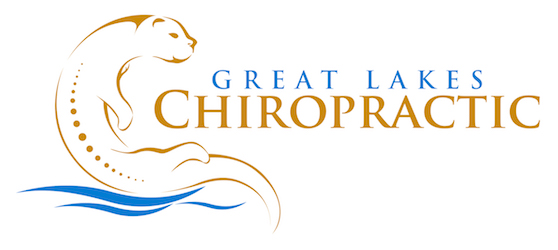
The Most Common Types of Headaches
Almost every person has had a headache once in their lives. Some may be more “memorable” than others, some may even be debilitating; but the common denominator is: they are very common.
 Headaches become a burden once an individual has to begin taking time off work, or has to amend their day to day activities to recuperate. The most common way people treat their headaches is with pharmaceuticals like Ibuprofen, Aspirin, Acetaminophen, or prescription medication. The long term effects of these can range from upset stomach, to ulcers, to liver or kidney damage.
Headaches become a burden once an individual has to begin taking time off work, or has to amend their day to day activities to recuperate. The most common way people treat their headaches is with pharmaceuticals like Ibuprofen, Aspirin, Acetaminophen, or prescription medication. The long term effects of these can range from upset stomach, to ulcers, to liver or kidney damage.
How We Experience Pain Matters
The truth is, we all experience pain differently. Headaches come in many intensities, durations, causes and frequency. There are ways to help prevent and treat headaches without exposing our bodies to the possibility of long term health issues. But first, we must understand the differences between headaches.
There are generally 4 types of headaches, each with different causes and possible treatment options:
Tension Headaches are characteristic of the tightening or pressure feeling in the whole head. It may not be particularly severe, but can feel more like a steady squeezing throughout the day. The intensity usually does not change with activity, but they can become worse in the evening. Tension headaches can last anywhere from less than an hour, to more than a few days.
Cluster Headaches are experienced most by middle aged men, and can be directly associated with watery eyes and a runny nose. They are generally felt on one side of the head, and are commonly compared to feeling like there is an ice pick through one eye. These headaches are called cluster headaches because they occur in clusters, repeatedly recurring throughout the course of a day, a week, and sometimes for months. The pain is said to be debilitating, and unlike a migraine, sufferers find respite in walking, pacing, or moving around.
Migraine Headaches are the most common “illnesses” sufferers will cite as a reason to take time away from work and other responsibilities. Migraine headaches can severely impair one’s ability to function, and will often arrive with other symptoms like nausea, vomiting, dizziness, blurred vision, and the inability to tolerate light. Migraines generally affect one side of the head, and can last from one to three days. Some people will experience a migraine as an “aura”, meaning they can experience symptoms like dizziness, sensitivity to light, or numbness; but without the headache.
Cervicogenic Headaches are caused by structural irritation to the nerves, tendons, muscle, or joints around the head. These headaches are often caused by holding your head or neck in an awkward position for long periods of time, sleeping strains, whiplash, old accident injuries, or repetitive strains.
People experience headaches differently. This being said, the approach to prevention and management of headaches will be individualized. We will often combine a combination of adjustments, massage, and home care approaches to reduce the frequency and severity of the headache pain. Medication does not have to be your first choice for pain relief.
If you are someone who experiences headaches enough to interrupt your life, discuss this with us to develop a treatment plan that works best for you. Suffering with head pain does not have to be normalized or minimized in your life.
Can Ice or a Cold Pack Treat a Headache?
Most people will experience the occasional headache. Many of which will not reach for medications to treat the pain because the pain or irritation will dissipate on its own. But if you are one of the many people who experience debilitating head pain, medication may have become your treatment option of choice. Chronic headaches can be disruptive to your life and your family, as can the long term side effects of medication use.
If you’re a migraine sufferer or if you experience chronic headaches and have become accustomed to using medications to treat them you’re likely thinking ice or cold packs won’t work. But let me assure you, with precise care you can also benefit from natural remedies and save your organs from the effects of medication over-use.
Let’s make a Plan That Works For You
Thankfully, your chiropractor will be able to devise a plan for your headache prevention and treatment that is individualized for you and your circumstances. One of the most common practices for headache relief is the use of ice. The application of ice or a cold pack to the back of your neck during a headache or migraine can help reduce pain and inflammation.
Cold Therapy is an Ancient Method
Cold therapy has been dated back to hundreds of years, and long before medications were made available for pain relief. Ice is a common treatment option for any type of inflammation, headache pain and the inflammation that causes it is no different. Cold can constrict the blood vessels in and around the head, which also causes your body to concentrate on the cold, rather than the pain.
Is There a Technique to Using Ice?
 Ice or cold packs are excellent home remedies, but there are a few things to consider when using them.
Ice or cold packs are excellent home remedies, but there are a few things to consider when using them.
The earlier you tend to the headache, the more likely you can restrict its progression. Applying ice or a cold pack at the onset of your headache will be significantly more effective than if you apply it after hours of suffering.
Ice should never be directly applied to your skin. Using a towel, a blanket, or a shirt to act as a barrier between your skin and the ice will prevent irritation. This is particularly important considering the cold pack or ice should be applied around the base of your head and around your neck.
Application should happen in 20 minute intervals. Leaving the ice this close to your skin for longer periods can cause irritation. Apply the ice for 15-20 minutes, then remove it for 30-60 minutes, and reapply as needed. It’s common for the area to feel cold initially, then a mild burning sensation, and numbness. Once the numbness sets in, it’s ideal to remove the ice or cold pack.
Speak With Us
Ideally, speaking with a chiropractor will allow you to decide which treatment options will work best for you and your circumstances. Ice works for most people, but understanding the root cause and the type of headaches you experience will allow for a more streamlined and efficient approach to prevention and pain relief. The intention is to be both pain and medication free, with your body working at optimal capacity.
